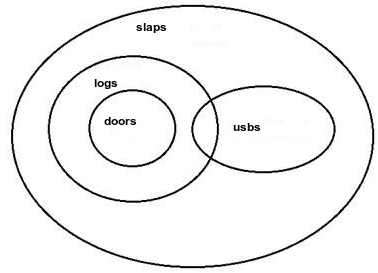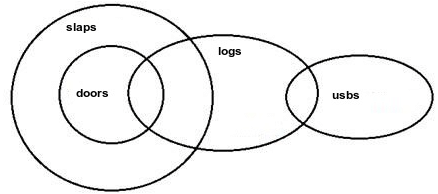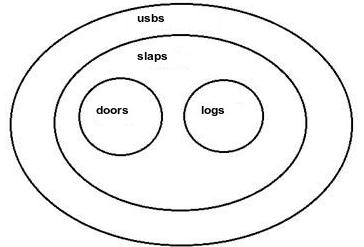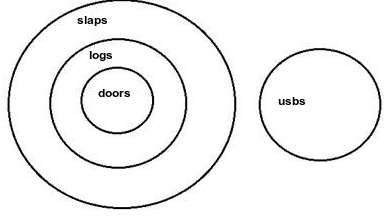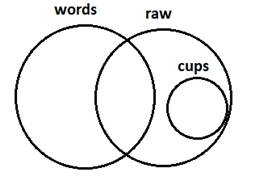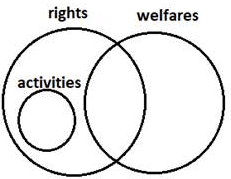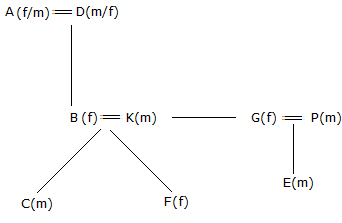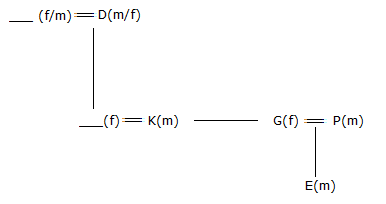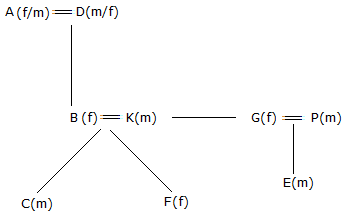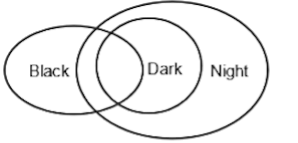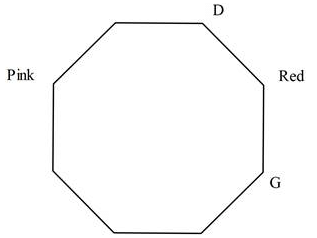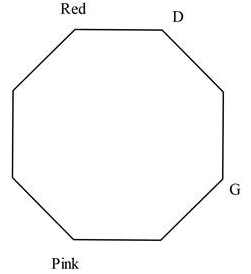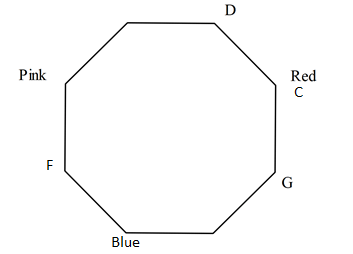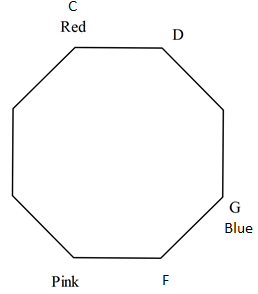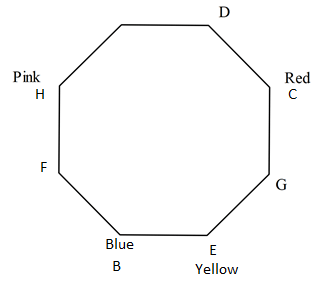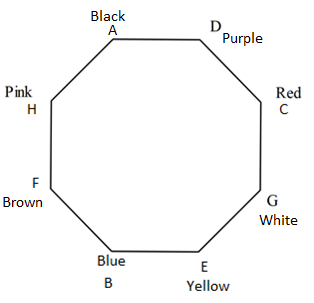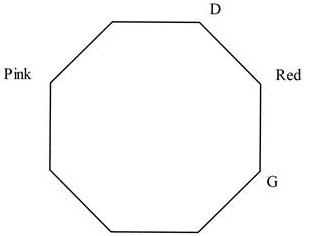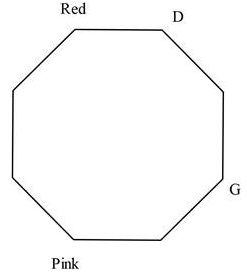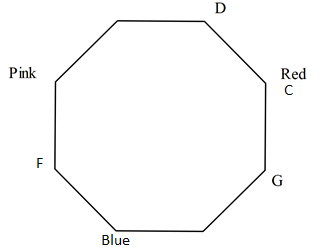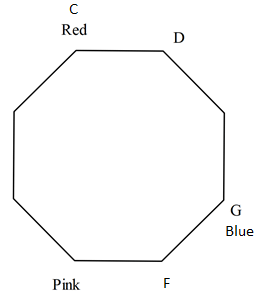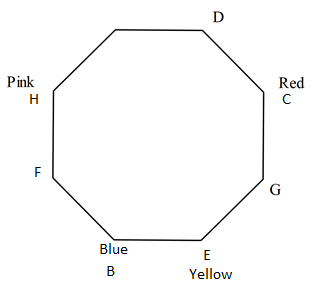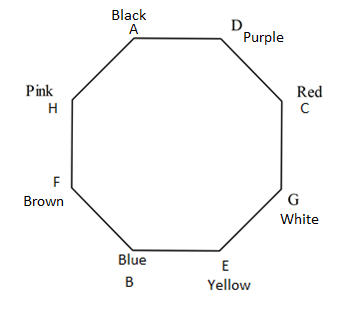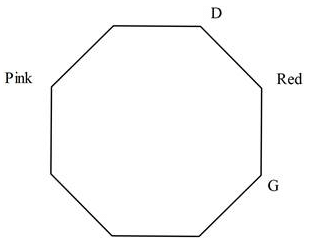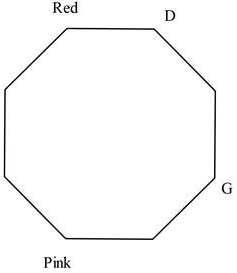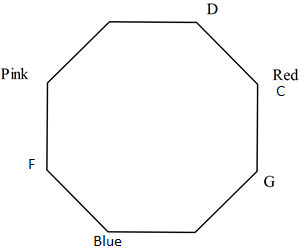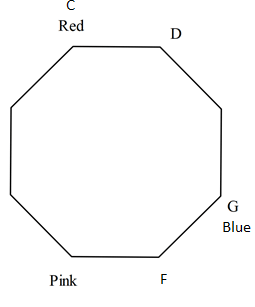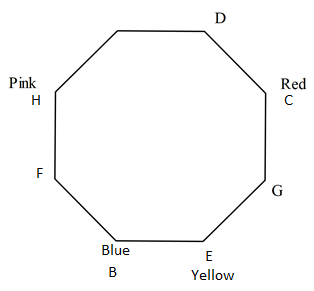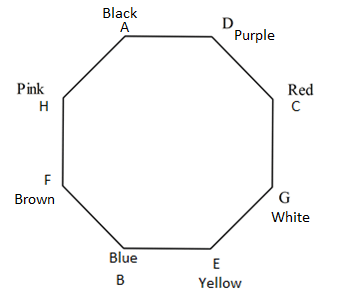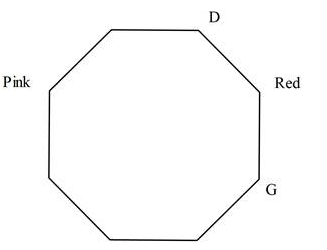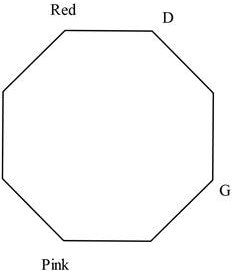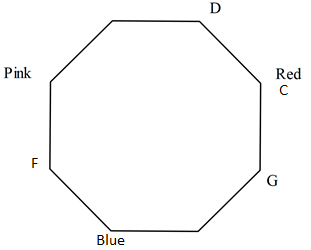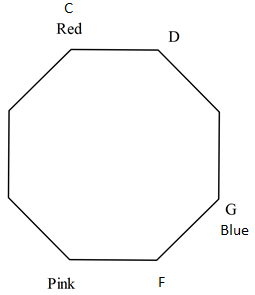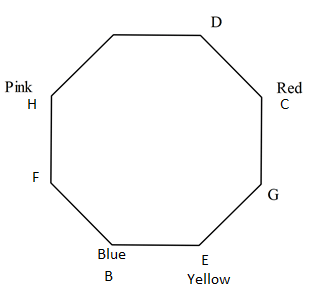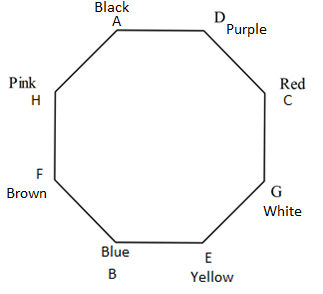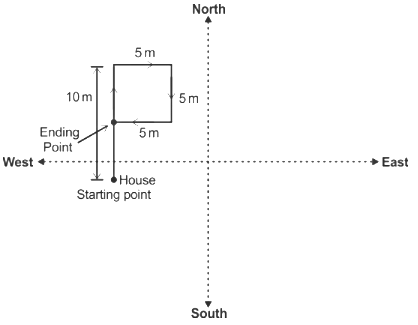MAH-CET MBA Mock Test- 6 - CAT MCQ
30 Questions MCQ Test - MAH-CET MBA Mock Test- 6
Each of the questions below consists of a question and two statements given below it. You have to decide whether the data provided in the statements are sufficient to answer the question.
In which month of the year did Rahul go abroad for a vacation?
I. Rahul correctly remembers that he went for a vacation in the first half of the year.
II. Rahul's son correctly remembers that they went for a vacation after 31st March but before 1st May.
Rahul who lives in rural Gurgaon, has more purchasing power than Parikshit who lives in proper New Delhi, even though both of them have the same salary. This is because the part of Parikshit's income that is spent on food and shelter, can be used by Rahul for other needs.
Which of the following inferences is best supported by the statement made above?
Directions: Read the following information carefully and answer the question given below-
A word and number arrangement machine when given an input line of words and numbers rearranges them following a particular rule in each step. The following is an
illustration of input rearrangement.
Input - 503 environment 955 device 300 chain 481 engine 321 696 conversation
Step-1: 300 503 environment 955 device chain 481 engine 321 696 conversation
Step-2: 300 503 environment 955 device 481 engine 321 696 conversation chain
Step-3: 300 321 503 environment 955 device 481 engine 696 conversation chain
Step-4: 300 321 481 503 environment 955 device engine 696 conversation chain
Step-5: 300 321 481 503 environment 955 engine 696 device conversation chain
Step-6: 300 321 481 503 environment 955 696 engine device conversation chain
Step-7: 300 321 481 503 696 environment 955 engine device conversation chain
Step-8: 300 321 481 503 696 955 environment engine device conversation chain
Step-8 is the last step of the given input.
Answer the following questions for the below input:
Input - cigarette practice 432 223 641 draft 754 705 case 756 front
What is step-7?
Directions: Read the following information carefully and answer the question given below-
A word and number arrangement machine when given an input line of words and numbers rearranges them following a particular rule in each step. The following is an
illustration of input rearrangement.
Input - 503 environment 955 device 300 chain 481 engine 321 696 conversation
Step-1: 300 503 environment 955 device chain 481 engine 321 696 conversation
Step-2: 300 503 environment 955 device 481 engine 321 696 conversation chain
Step-3: 300 321 503 environment 955 device 481 engine 696 conversation chain
Step-4: 300 321 481 503 environment 955 device engine 696 conversation chain
Step-5: 300 321 481 503 environment 955 engine 696 device conversation chain
Step-6: 300 321 481 503 environment 955 696 engine device conversation chain
Step-7: 300 321 481 503 696 environment 955 engine device conversation chain
Step-8: 300 321 481 503 696 955 environment engine device conversation chain
Step-8 is the last step of the given input.
Answer the following questions for the below input:
Input - cigarette practice 432 223 641 draft 754 705 case 756 front
What is the position of the element '705' in step-4 from the left?
Directions: Read the following information carefully and answer the question given below-
A word and number arrangement machine when given an input line of words and numbers rearranges them following a particular rule in each step. The following is an
illustration of input rearrangement.
Input - 503 environment 955 device 300 chain 481 engine 321 696 conversation
Step-1: 300 503 environment 955 device chain 481 engine 321 696 conversation
Step-2: 300 503 environment 955 device 481 engine 321 696 conversation chain
Step-3: 300 321 503 environment 955 device 481 engine 696 conversation chain
Step-4: 300 321 481 503 environment 955 device engine 696 conversation chain
Step-5: 300 321 481 503 environment 955 engine 696 device conversation chain
Step-6: 300 321 481 503 environment 955 696 engine device conversation chain
Step-7: 300 321 481 503 696 environment 955 engine device conversation chain
Step-8: 300 321 481 503 696 955 environment engine device conversation chain
Step-8 is the last step of the given input.
Answer the following questions for the below input:
Input - cigarette practice 432 223 641 draft 754 705 case 756 front
In step-3 how many elements are there between 'cigarette' and 'case'?
Directions: Read the following information carefully and answer the question given below-
A word and number arrangement machine when given an input line of words and numbers rearranges them following a particular rule in each step. The following is an
illustration of input rearrangement.
Input - 503 environment 955 device 300 chain 481 engine 321 696 conversation
Step-1: 300 503 environment 955 device chain 481 engine 321 696 conversation
Step-2: 300 503 environment 955 device 481 engine 321 696 conversation chain
Step-3: 300 321 503 environment 955 device 481 engine 696 conversation chain
Step-4: 300 321 481 503 environment 955 device engine 696 conversation chain
Step-5: 300 321 481 503 environment 955 engine 696 device conversation chain
Step-6: 300 321 481 503 environment 955 696 engine device conversation chain
Step-7: 300 321 481 503 696 environment 955 engine device conversation chain
Step-8: 300 321 481 503 696 955 environment engine device conversation chain
Step-8 is the last step of the given input.
Answer the following questions for the below input:
Input - cigarette practice 432 223 641 draft 754 705 case 756 front
223 cigarette practice 432 641 draft 754 705 case 756 front
Directions: Read the following information carefully and answer the question given below-
A word and number arrangement machine when given an input line of words and numbers rearranges them following a particular rule in each step. The following is an
illustration of input rearrangement.
Input - 503 environment 955 device 300 chain 481 engine 321 696 conversation
Step-1: 300 503 environment 955 device chain 481 engine 321 696 conversation
Step-2: 300 503 environment 955 device 481 engine 321 696 conversation chain
Step-3: 300 321 503 environment 955 device 481 engine 696 conversation chain
Step-4: 300 321 481 503 environment 955 device engine 696 conversation chain
Step-5: 300 321 481 503 environment 955 engine 696 device conversation chain
Step-6: 300 321 481 503 environment 955 696 engine device conversation chain
Step-7: 300 321 481 503 696 environment 955 engine device conversation chain
Step-8: 300 321 481 503 696 955 environment engine device conversation chain
Step-8 is the last step of the given input.
Answer the following questions for the below input:
Input - cigarette practice 432 223 641 draft 754 705 case 756 front
In step-6, what is the sixth element from the left?
Directions: Read the following information carefully and answer the question given below-
A word and number arrangement machine when given an input line of words and numbers rearranges them following a particular rule in each step. The following is an
illustration of input rearrangement.
Input - 503 environment 955 device 300 chain 481 engine 321 696 conversation
Step-1: 300 503 environment 955 device chain 481 engine 321 696 conversation
Step-2: 300 503 environment 955 device 481 engine 321 696 conversation chain
Step-3: 300 321 503 environment 955 device 481 engine 696 conversation chain
Step-4: 300 321 481 503 environment 955 device engine 696 conversation chain
Step-5: 300 321 481 503 environment 955 engine 696 device conversation chain
Step-6: 300 321 481 503 environment 955 696 engine device conversation chain
Step-7: 300 321 481 503 696 environment 955 engine device conversation chain
Step-8: 300 321 481 503 696 955 environment engine device conversation chain
Step-8 is the last step of the given input.
Answer the following questions for the below input:
Input - cigarette practice 432 223 641 draft 754 705 case 756 front
What is the ratio between the second element from left in step-6 to the fifth element from the right in step-7?
In the given question, a set of conclusions is given. There are five options consisting of three or more statements. You need to choose the option that contains the set of statements from which the given conclusions logically follow.
All doors being slapped is not a possibility. No usb is a log.
In each of the questions below, two statements are given and followed by conclusions: I and II. You have to take the given statements to be true even if they seem to be at variance from commonly known facts. Read the conclusions and decide which of the given conclusions logically follows from the given statements disregarding commonly known facts.
Statements:
Only a few words are raw.
All cups are raw.
Conclusions:
I. All raw being words is a possibility.
II. All raw being cups is a possibility
In each of the questions below, two statements are given and followed by conclusions: I and II. You have to take the given statements to be true even if they seem to be at variance from commonly known facts. Read the conclusions and decide which of the given conclusions logically follows from the given statements disregarding commonly known facts.
Statements:
Only a few rights are welfares.
All activities are rights.
Conclusions:
I. At least some activities are welfares.
II. All welfares are activities.
Television isn't always the idiot box. 'India's Most Wanted' on Zee helped nab 24 criminals. Now Sony's 'Missing', a series about missing people has also opened its account. It has helped reunite 11 year old Kartik Tamrai Selvan who had been missing since January 20 with his parents. Kartik ran away from his Chembur home and ended up in Mathura where he was looked after by a Muslim family. When Kartik's case was featured in an episode aired on August 2, his guardians saw it and promptly rang up Mumbai to have him sent back. "Missing' has used the power of positive television in helping a family," says a channel spokesperson.
Which of the following can be inferred from the given passage?
Directions: Read the following information carefully and answer the question given below-
There are nine members. K is G's brother and D's son-in-law. B is the mother of C who is not the sibling of E. E is K's nephew and F is granddaughter of A. K is brother-in-law of P who is G's husband. C is male.
How is A related to C.
Directions: Read the following information carefully and answer the question given below-
There are nine members. K is G's brother and D's son-in-law. B is the mother of C who is not the sibling of E. E is K's nephew and F is granddaughter of A. K is brother-in-law of P who is G's husband. C is male.
Who is mother of E.
Direction: In the question below are two statements followed by two conclusions numbered I and II. You have to take the given statements to be true even if they seem to be at variance with commonly known facts. Read all the conclusions and then decide which of the given conclusions logically follows from the given statements disregarding commonly known facts.
Statement:
All dark is night.
Some dark are black.
Conclusion:
I. All black is night.
II. Some black is not night.
Directions: Read the following information carefully and answer the question given below.
Eight people were seated around a regular octagon table such that the people were seated on different corners facing towards the center. Each of them was wearing a shirt of different colors. E was wearing yellow shirt and was seated third to the right of H. D is seated second to the right of G. A was not wearing white shirt. The person wearing red shirt was seated adjacent to D and third to the left of the person wearing the pink shirt. The person wearing black shirt was not seated adjacent to E. F was seated to the immediate right of the person wearing pink shirt and immediate left of the person wearing the blue shirt. A was seated to the immediate right of the person wearing a Purple shirt and second to the left of the person wearing brown shirt. The person wearing the blue shirt was seated third to the left of C. B is seated to the immediate left of the person wearing the yellow shirt.
Which colour shirt was A wearing?
Directions: Read the following information carefully and answer the question given below.
Eight people were seated around a regular octagon table such that the people were seated on different corners facing towards the center. Each of them was wearing a shirt of different colors. E was wearing yellow shirt and was seated third to the right of H. D is seated second to the right of G. A was not wearing white shirt. The person wearing red shirt was seated adjacent to D and third to the left of the person wearing the pink shirt. The person wearing black shirt was not seated adjacent to E. F was seated to the immediate right of the person wearing pink shirt and immediate left of the person wearing the blue shirt. A was seated to the immediate right of the person wearing a Purple shirt and second to the left of the person wearing brown shirt. The person wearing the blue shirt was seated third to the left of C. B is seated to the immediate left of the person wearing the yellow shirt.
How many people were seated between H and C when counted from the left of C?
Directions: Read the following information carefully and answer the question given below.
Eight people were seated around a regular octagon table such that the people were seated on different corners facing towards the center. Each of them was wearing a shirt of different colors. E was wearing yellow shirt and was seated third to the right of H. D is seated second to the right of G. A was not wearing white shirt. The person wearing red shirt was seated adjacent to D and third to the left of the person wearing pink shirt. The person wearing black shirt was not seated adjacent to E. F was seated to the immediate right of the person wearing pink shirt and immediate left of the person wearing blue shirt. A was seated to the immediate right of the person wearing Purple shirt and second to the left of the person wearing brown shirt. The person wearing blue shirt was seated third to the left of C. B is seated to the immediate left of the person wearing yellow shirt.
Who is seated third to the right of A?
Directions: Read the following information carefully and answer the question given below.
Eight people were seated around a regular octagon table such that the people were seated on different corners facing towards the center. Each of them was wearing a shirt of different colors. E was wearing yellow shirt and was seated third to the right of H. D is seated second to the right of G. A was not wearing white shirt. The person wearing red shirt was seated adjacent to D and third to the left of the person wearing pink shirt. The person wearing black shirt was not seated adjacent to E. F was seated to the immediate right of the person wearing pink shirt and immediate left of the person wearing blue shirt. A was seated to the immediate right of the person wearing Purple shirt and second to the left of the person wearing brown shirt. The person wearing blue shirt was seated third to the left of C. B is seated to the immediate left of the person wearing yellow shirt.
Which of these statements is true?
In the following question assuming the given statements to be true, find which of the conclusions among the given three conclusions is /are definitely true and then give your answers accordingly.
Statements:
A ≤ B ≤ C < D ≥ E; F = G; D < F; H ≤ A; I < A
Conclusions:
I. A < D
II. G > E
III. I < C
In making decisions about important questions, it is desirable to be able to distinguish between "strong" arguments and "weak" arguments. "Strong" arguments must be both important and directly related to the questions. "Weak" arguments may not be directly related to the question and may be of minor importance or may be related to the trivial aspects of the question. Each question below is followed by two arguments numbered I and II. You have to decide which of the arguments is "strong" arguments and which is "weak" arguments.
Should the retirement age for employees of Central/State Govt. be increased by two years?
I. Yes, this is required in view of the increasing longevity.
II. Yes, experienced employees are more useful than the new recruits.
In the questions below, two situations are given, followed by two statements (1) and (2). You have to take the given statements to be true even if they seem to be at variance from commonly known facts. Carefully analyse the situations, and choose the option that depicts the correct relationship between the statements and situations.
Situation I- The Supreme Court banned use of pet-coke and dirty furnace oil in Haryana, Rajasthan and Uttar Pradesh from the start of the coming year.
Situation II- A study conducted by a reputed organisation found that pollution from outdoor and indoor air, water and soil contamination, and chemical pollutants was one of largest risk factors leading to premature death.
1. Pet coke and furnace oil have been blamed for releasing deadly sulphur dioxide and nitrogen oxide, which are the major sources of air pollution in Haryana, Rajasthan and Uttar Pradesh.
2. Globally, air pollution was the biggest contributor linked to 6.5 million deaths in 2015, ahead of water pollution and workplace-related pollution.
Directions: Read the following information carefully and answer the question given below-
Seven persons A, B, C, D, E, F and G were seated along a straight row facing the North. Each of them owned a different handset of different colour. The handsets were of the brands Nokia, Samsung, apple, Lenovo, Micromax, vivo and Motorola not necessarily in the same order. The colours were red, blue, golden, white, black, orange and purple not necessarily in the same order.
• G's neighbour had a white phone and was seated at a gap of 3 from the person with the Motorola handset
• B was 3rd to the right of the one with the Nokia phone
• Motorola handset was purple in colour
• C had the Samsung handset and was seated 3rd to the right of D
• A's neighbour had the apple handset
• E had the blue handset and was at either of the corners, E was not neighbouring B
• A's neighbours had red and golden handsets
• The person with Micromax was 2nd to the right of the person with Lenovo
• A and C were seated at a gap of 1
• A did not have the white or the purple handset
• G did not have the golden handset
• The person with apple handset was to the immediate left of the person with the black handset
How many people were seated between F and the one with the black handset?
Directions: Read the following information carefully and answer the question given below-
Seven persons A, B, C, D, E, F and G were seated along a straight row facing the North. Each of them owned a different handset of different colour. The handsets were of the brands Nokia, Samsung, apple, Lenovo, Micromax, vivo and Motorola not necessarily in the same order. The colours were red, blue, golden, white, black, orange and purple not necessarily in the same order.
• G's neighbour had a white phone and was seated at a gap of 3 from the person with the Motorola handset
• B was 3rd to the right of the one with the Nokia phone
• Motorola handset was purple in colour
• C had the Samsung handset and was seated 3rd to the right of D
• A's neighbour had the apple handset
• E had the blue handset and was at either of the corners, E was not neighbouring B
• A's neighbours had red and golden handsets
• The person with Micromax was 2nd to the right of the person with Lenovo
• A and C were seated at a gap of 1
• A did not have the white or the purple handset
• G did not have the golden handset
• The person with apple handset was to the immediate left of the person with the black handset
Who among the following owned the Nokia handset?
Directions: Read the following information carefully and answer the question given below-
Seven persons A, B, C, D, E, F and G were seated along a straight row facing the North. Each of them owned a different handset of different colour. The handsets were of the brands Nokia, Samsung, apple, Lenovo, Micromax, vivo and Motorola not necessarily in the same order. The colours were red, blue, golden, white, black, orange and purple not necessarily in the same order.
• G's neighbour had a white phone and was seated at a gap of 3 from the person with the Motorola handset
• B was 3rd to the right of the one with the Nokia phone
• Motorola handset was purple in colour
• C had the Samsung handset and was seated 3rd to the right of D
• A's neighbour had the apple handset
• E had the blue handset and was at either of the corners, E was not neighbouring B
• A's neighbours had red and golden handsets
• The person with Micromax was 2nd to the right of the person with Lenovo
• A and C were seated at a gap of 1
• A did not have the white or the purple handset
• G did not have the golden handset
• The person with apple handset was to the immediate left of the person with the black handset
Who among the following had the Vivo handset?
Directions: Read the following information carefully and answer the question given below-
Certain number of persons were seated in a linear row facing north. Information about only some of them is known. More than 20 people were sitting in a row.
Four persons sit between A and B. C sits third to the right of B. Three persons sit between A and D. The number of persons sitting between D and B is twice that of the number of persons sitting between C and E. E sits to the right of B. The number of persons who sit to the left of D is one less than the number of persons who sit to the right of E. Not more than five persons sit to the left of A.
If K sits second to the left of B, then which of the following combination(s) is/are true?
Directions: Read the following information carefully and answer the question given below-
Certain number of persons were seated in a linear row facing north. Information about only some of them is known. More than 20 people were sitting in a row.
Four persons sit between A and B. C sits third to the right of B. Three persons sit between A and D. The number of persons sitting between D and B is twice that of the number of persons sitting between C and E. E sits to the right of B. The number of persons who sit to the left of D is one less than the number of persons who sit to the right of E. Not more than five persons sit to the left of A.
If P sits to the immediate right of A, then what is the position of D with respect to P?
Directions: Read the following information carefully and answer the question given below-
Certain number of persons were seated in a linear row facing north. Information about only some of them is known. More than 20 people were sitting in a row.
Four persons sit between A and B. C sits third to the right of B. Three persons sit between A and D. The number of persons sitting between D and B is twice that of the number of persons sitting between C and E. E sits to the right of B. The number of persons who sit to the left of D is one less than the number of persons who sit to the right of E. Not more than five persons sit to the left of A.
How many persons were sitting in a row?
At his house Ram is facing East, then he turns left and goes 10 m, then he turns right and goes 5 m and then he goes 5 m towards South and from there 5 m towards the West. In which direction is he from his house?
Directions: Read the following information carefully and answer the question given below-
Study the following information carefully and answer the questions given below:
'negative easily search field' is written as 'D7F M6J M7B W9F'
'home population showed tribes' is written as 'N5P F7I F7S P11P'
'pick finance symbols banned' is written as 'D8J D5J M8Z F7B'
'across historic cabinet hailed' is written as 'J8J T7D F8B F7B'
What is the numerical value in the word 'captain'?



